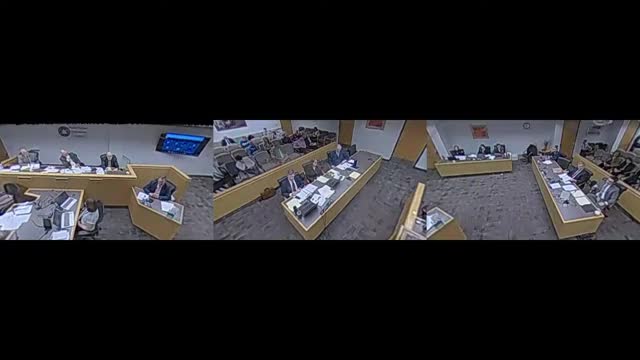Underwriters assess wildfire liability impacts on insurance premiums nationwide
March 23, 2025 | Utah Public Service Commission, Utah Subcommittees, Commissions and Task Forces, Utah Legislative Branch, Utah
This article was created by AI summarizing key points discussed. AI makes mistakes, so for full details and context, please refer to the video of the full meeting. Please report any errors so we can fix them. Report an error »

The Phase III Hearing on DAO Docket Issues (24-035-04, RMP's Rate Case) took place in Utah on March 23, 2025, focusing on the implications of wildfire risks on insurance premiums. The meeting began with discussions on how insurers assess liability losses, particularly in relation to negligence claims associated with wildfires.
The first significant topic addressed was the methodology used to evaluate losses. Participants emphasized the importance of distinguishing between human-caused wildfires and those resulting from natural occurrences. A statistic was presented indicating that 88 percent of wildfires nationally are attributed to human actions, prompting discussions on how this data influences premium calculations. The conversation highlighted the need for careful judgment in determining negligence, especially in cases where utility equipment may be involved.
As the meeting progressed, questions arose regarding specific incidents, such as fires caused by downed power lines. Experts explained that the context of vegetation management plays a critical role in assessing negligence. For instance, a fire resulting from a downed power line in a well-maintained area might not be deemed negligent, while the same incident in an unmanaged area could be.
The discussion also touched on the relevance of historical data in underwriting practices. It was noted that insurers tend to prioritize more recent data when evaluating risks, as older data may not accurately reflect current conditions, including the impact of climate change on wildfire frequency and severity.
The meeting concluded with a consensus that wildfire risks have significantly increased in recent years, particularly from 2014 to 2025. This acknowledgment is expected to influence future insurance premium assessments and underwriting guidelines as the industry adapts to evolving environmental challenges. The next steps involve further analysis of the data presented and its implications for rate-setting in the context of wildfire risks.
The first significant topic addressed was the methodology used to evaluate losses. Participants emphasized the importance of distinguishing between human-caused wildfires and those resulting from natural occurrences. A statistic was presented indicating that 88 percent of wildfires nationally are attributed to human actions, prompting discussions on how this data influences premium calculations. The conversation highlighted the need for careful judgment in determining negligence, especially in cases where utility equipment may be involved.
As the meeting progressed, questions arose regarding specific incidents, such as fires caused by downed power lines. Experts explained that the context of vegetation management plays a critical role in assessing negligence. For instance, a fire resulting from a downed power line in a well-maintained area might not be deemed negligent, while the same incident in an unmanaged area could be.
The discussion also touched on the relevance of historical data in underwriting practices. It was noted that insurers tend to prioritize more recent data when evaluating risks, as older data may not accurately reflect current conditions, including the impact of climate change on wildfire frequency and severity.
The meeting concluded with a consensus that wildfire risks have significantly increased in recent years, particularly from 2014 to 2025. This acknowledgment is expected to influence future insurance premium assessments and underwriting guidelines as the industry adapts to evolving environmental challenges. The next steps involve further analysis of the data presented and its implications for rate-setting in the context of wildfire risks.
View full meeting
This article is based on a recent meeting—watch the full video and explore the complete transcript for deeper insights into the discussion.
View full meeting

